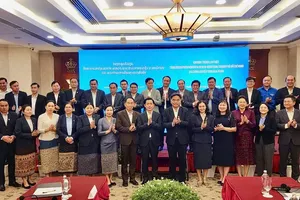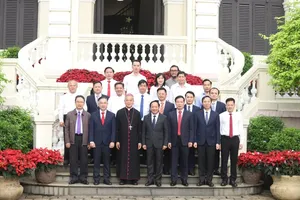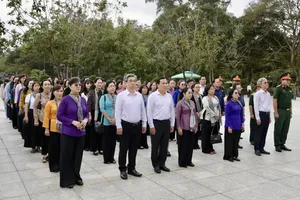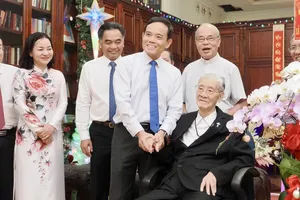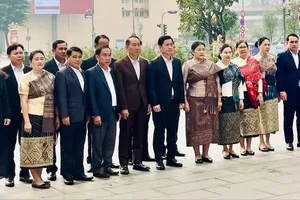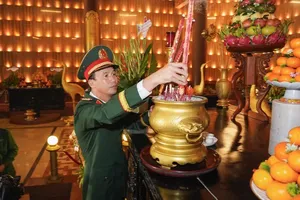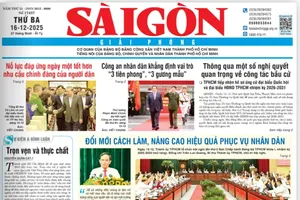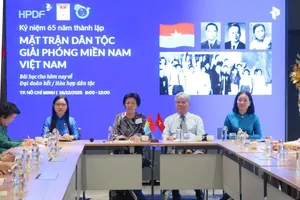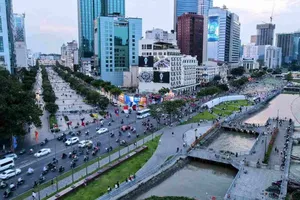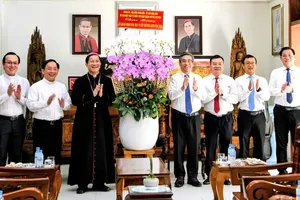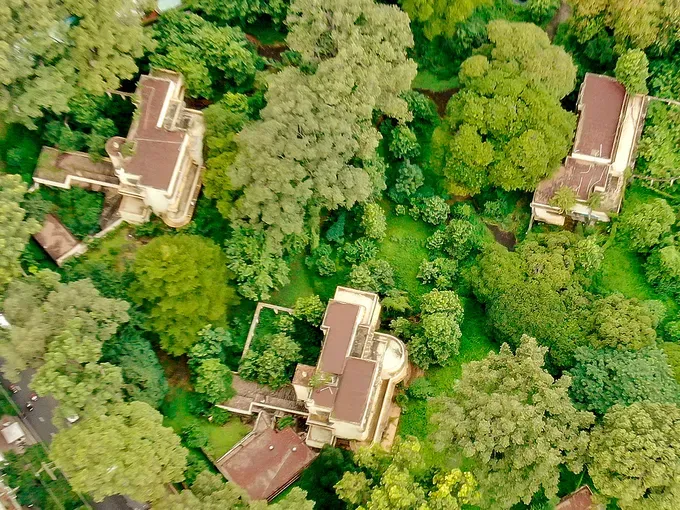
At a conference reviewing 50 years of HCMC’s literature and arts, held on October 18, HCMC Party Secretary Tran Luu Quang announced a significant policy shift. The HCMC Party Standing Committee’s definitive stance, he said, is to halt any new residential projects in the vicinity of Nha Rong Wharf and Ho Chi Minh Museum. Instead, this prime location is slated to be transformed into Ho Chi Minh Cultural Space. It’ll become a public park, coupled with an expansion of Nguyen Tat Thanh Street and other public services.
The municipal Department of Agriculture and Environment noted that its precise location is still undetermined because the overarching investment policy hasn’t been approved yet. The department’s report was based on the existing 1/500 scale detailed plan for the District 4 Port Sub-area (old), which HCMC had previously green-lit under Decision 6331/QD-UBND.
According to that plan, the project was designated for two land plots, K1 and K2. The former, spanning about 15,050m2, is the site of the current museum. The latter, at around 14,230m2, was zoned as the Ho Chi Minh Museum Park project. However, HCMC’s new orientation is to dramatically expand the project’s scale to encompass the entire 329,080m2 area of the formerly approved Nha Rong – Khanh Hoi project.
To lay the groundwork for the larger museum project, the HCMC Department of Agriculture and Environment has proposed two methods of public investment or a public-private partnership (PPP) via a Build-Transfer (BT) contract.
Phase 1 involves two critical steps:
- Approving the general policy and overseeing the project at its new, expanded scale by the HCMC Party Standing Committee;
- Releasing the seizure on the land use rights for the Nha Rong – Khanh Hoi Complex and formally revoking its original investment policy, which is reportedly contingent on the court’s verdict in the Van Thinh Phat Group case.
Following this, Phase 2 would begin, with a projected start of September 2026 for public investment or March 2026 for the PPP option.
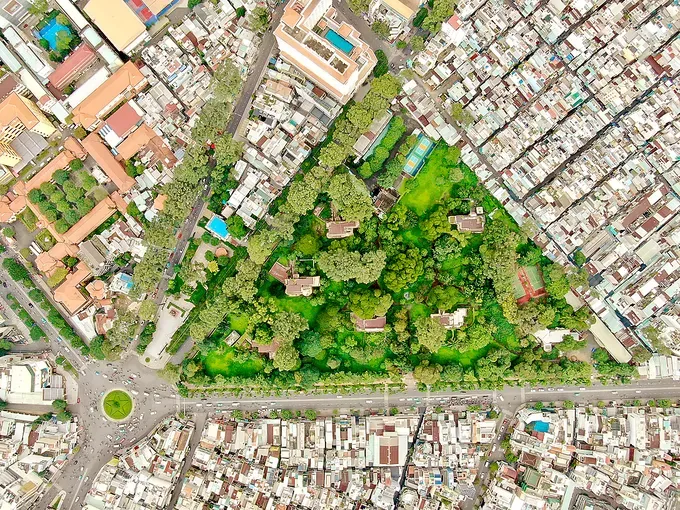
In a related move, the land parcel at the address of 1 Ly Thai To Street in Vuon Lai Ward will also be converted into a park. The announcements have reportedly been met with widespread public enthusiasm and strong approval.
This property is a substantial one, spanning approximately 44,312m2 of land with 7,101m2 of usable floor space. It’s currently managed by the Ministry of Foreign Affairs, and its approved use was as a Government Guest House. The compound includes seven villas, all of which are currently vacant. HCMC’s plan, upon officially receiving the property, is to invest in and construct a new public works project to serve the needs of the city’s residents.
To get the ball rolling, the HCMC Department of Agriculture and Environment proposes two pathways: public investment or a PPP via a BT contract without state payment.
Phase 1 is common to both and involves three key steps:
- Handling the public asset transfer, pending the Prime Minister’s approval;
- Securing HCMC Party Standing Committee approval to lead the project;
- Adjusting the city’s master plan for the 1 Ly Thai To area, a step slated for completion by November 2025.
Phase 2 then diverges. The public investment route is projected to break ground in July 2026, while the PPP route is planned for February 2026.
Prof Dr Dang Hung Vo considered the HCMC Party Standing Committee’s policy to turn “golden land” into parks “absolutely the right move.” He argued that megacities like Hanoi and HCMC “severely lack space” for a modern city.
Development, he said, isn’t just real estate; it’s about “expanding green spaces” to build a peaceful environment. He stressed that planning is critical to “harmonize economic growth with the quality of life,” noting that unfocused residential development “will inevitably impact residents’ rights.”
Architect Khuong Van Muoi, former Chairman of the HCMC Architects Association endorsed the policy as “sound,” reflecting a “humane and long-term vision” for a city “starved for green space and community areas.” He argued that while the “golden land” has immense commercial value, it simply can’t compare to the spiritual and quality-of-life value it will provide as a public park.
He called expanding the Ho Chi Minh Cultural Space around Nha Rong Wharf “perfectly logical” historically, as it’s tied to Uncle Ho’s departure. He stressed it must be a “living space” for reflection, not a static display, and designed to capture HCMC’s unique riverside character.
Critically, he added that the expansion must be combined with a simultaneous widening of Nguyen Tat Thanh Street. He described the road as “far too narrow” and “plagued by frequent congestion,” stating the widening is essential to make life easier for commuters.
Architect Ngo Anh Vu, Director of the HCMC Institute of Construction Planning, stated the policy to convert two “golden land” plots into parks will have a massive positive impact, as everyone wants more green space. He said this decision shows a special concern for the people.
To be effective, he advised developing the port’s “golden land” into a “multi-functional zone,” integrating community interaction, cultural exhibitions, and tourism services. He also stressed the need to balance investment efficiency.
He questioned whether maintenance funds would come from the state budget, then suggested a PPP or private investment model as a solution. This, he said, “could solve the budget problem while still enhancing the people’s quality of life.”
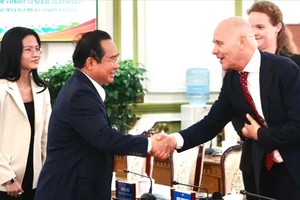
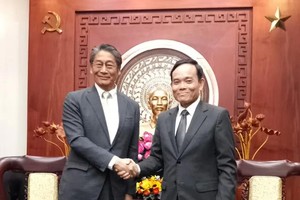
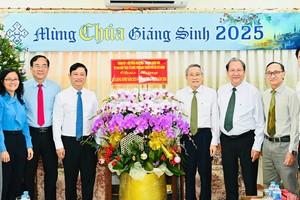
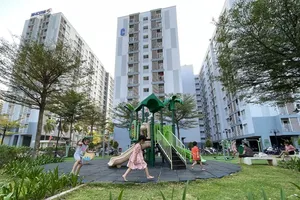
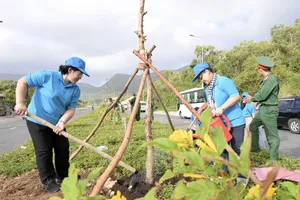
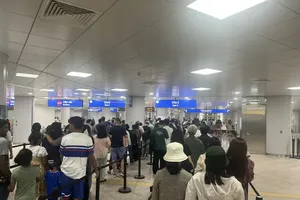
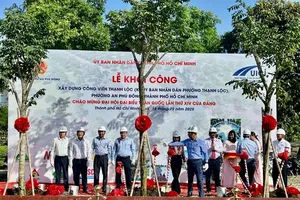
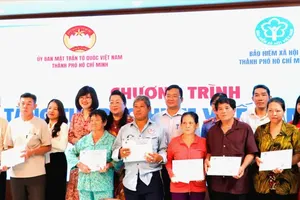
)
